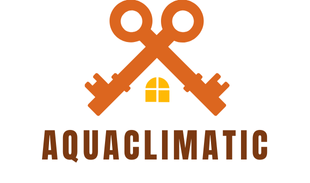In an era of rapid technological growth, smart home technology is reshaping the landscape of our daily lives. The integration of home automation systems with traditional UK home architecture has become a hot topic for both tech enthusiasts and property owners. A blend of old and new, this approach uniquely combines the charm of historic design with the convenience of modern smart technology. But how do you successfully merge these two seemingly opposing worlds? We’ll explore in detail the strategies to seamlessly incorporate home automation into the classic British home.
Understanding Home Automation Systems
Before we delve into the integration process, it’s essential to gain a firm grasp of what home automation systems entail. These systems are a collection of networked devices that give you control over various aspects of your home, such as lighting, temperature, security, and even entertainment. They offer a way to streamline home management tasks, making your home smarter and your life easier.
A voir aussi : What are the best strategies for maximizing daylight in a north-facing UK living room?
The heart of these systems lies in automation. This means that once programmed, the devices can carry out tasks without your direct intervention. For example, your lighting system can be set to turn on at a specific time or your heating adjusted according to the outside temperature. Some systems also incorporate learning algorithms that adapt to your habits and preferences over time, adding another layer of convenience.
Choosing Compatible Smart Devices
When you are looking to integrate smart home technology into a traditional home, compatibility is a key consideration. Remember that not all smart devices are created equal. Some may not work well with the existing infrastructure of your property, particularly if it features older, classical architecture. The challenge will be to find devices that can be easily installed without compromising the integrity of the home.
A lire aussi : What are the advantages of induction cooktops for UK city apartments?
Understanding your home’s architectural style and structure is essential to make informed decisions. For instance, certain smart devices might require extensive wiring and may not be suitable for older properties. You may want to consider wireless solutions or those that can use existing infrastructure, such as powerline networking devices.
Energy Efficiency and Smart Home Control
Energy efficiency is a crucial factor in modern home design, and this extends to smart homes. Smart home systems can substantially reduce energy consumption and, consequently, your utility bills. For instance, smart thermostats can adapt to your schedule and climate preferences, ensuring optimal energy usage.
Similarly, smart lighting systems can be programmed to switch off when a room is unoccupied. There are even smart plugs that can turn off appliances completely, eliminating energy wastage from standby modes. Such features make a strong case for the integration of smart systems into homes, regardless of their age or architectural style.
Data Security in Home Automation
Safety is a paramount concern in any home, and when we talk about home automation, this extends to data security. Given that home automation systems are connected to the internet, they are susceptible to cyber threats.
Device manufacturers are aware of these challenges and have taken steps to ensure robust security measures. For example, encrypted communication protocols, secure user authentication, and regular firmware updates are the norm in smart home devices. However, users play a vital role in maintaining security as well. Regular updates, strong passwords, and the use of secure networks can go a long way in keeping your smart home secure.
The Role of Big Tech in Home Automation
Companies such as Google have a significant role in the smart home landscape. Google’s suite of smart home devices, aptly named Google Home, offers a range of products from smart speakers to thermostats, all flawlessly controlled through your smartphone. These devices are designed to work together, creating a cohesive home automation network.
Moreover, Google’s voice-activated assistant, Google Assistant, allows for hands-free control, adding an extra layer of convenience. The company’s emphasis on user-friendly design and interoperability between devices makes it a popular choice for those looking to integrate smart technology into their homes.
In conclusion, while integrating home automation systems with traditional UK home architecture may come with its challenges, it is by no means impossible. With a thoughtful approach that respects the architectural integrity of the home, you can enjoy the convenience and efficiency of a smart home while preserving the charm of traditional design. The key is to understand the capabilities and limitations of smart devices, prioritize energy efficiency and security, and leverage the power of tech giants like Google to create a seamless, user-friendly home automation experience.
Remember, smart homes are not just about the latest gadgets; they’re about enhancing your lifestyle and comfort. Whether you live in a Victorian terrace or a modern flat, there’s a smart home solution out there for you.
The Future of Healthcare and Home Automation
As we move further into the 21st century, the nexus between health care and home automation is becoming increasingly evident. The home is no longer just a place for relaxation and entertainment, but also a hub for health management. High-tech devices are now being developed to monitor health parameters, assist in medication management, and even provide emergency services, making smart home technology crucial in health care management.
Health smart devices, such as wearable fitness trackers and smart scales, can seamlessly integrate with your home automation system, allowing for real-time health updates. Elderly or disabled occupants can benefit from smart home technologies that can monitor their movements, alert emergency services in case of a fall, and remind them to take their medication.
Moreover, smart home technology can offer a more user-centered approach to health care. For instance, it can be programmed to adapt the home environment to the occupant’s health needs. This could mean adjusting the lighting for someone with vision problems or controlling the temperature for someone with a health condition sensitive to cold or heat.
However, just like any other device connecting to the internet, health smart devices are vulnerable to cybersecurity threats. It is the responsibility of both the user and the device manufacturer to ensure that the data generated is adequately protected. Regular firmware updates, secure networks, and strong passwords are all practices that can help safeguard your health data.
With the rapid advancements in technology, the integration of health care and home automation is set to reshape our daily life, making health management more efficient and user-centered.
Designing Smart Homes with User-Centered Approach
The goal of home automation should be to enhance the occupants’ daily life by making their living space more comfortable, secure, and efficient. This makes a user-centered approach to smart home design essential. After all, the success of any home automation system ultimately lies in how well it caters to the needs and preferences of its users.
To design a user-centered smart home, one must first understand the needs, habits, and preferences of the occupants. This could involve conducting surveys or interviews, or observing the occupants’ daily routines. Once the necessary data is gathered, it can be used to customize the home automation system to the specific needs of the occupants.
For instance, a user-centered approach might involve designing a lighting control system that not only saves energy but also caters to the specific lighting needs of different occupants. A teenager might prefer brighter lighting for studying, while an elderly occupant might need softer lighting to prevent eye strain.
Moreover, a user-centered design should be adaptable and flexible. As the occupants’ needs and preferences change over time, the home automation system should be able to accommodate these changes. This could mean allowing for easy reconfiguration of settings or upgrading of devices.
In conclusion, integrating home automation systems into traditional UK home architecture is a task that requires a thoughtful approach. The key is to respect the architectural integrity of the home while leveraging the benefits of smart technology. Energy efficiency and data security should be top priorities, with a strong emphasis on a user-centered approach to design. With the help of tech giants like Google, homeowners can create a seamless, user-friendly home automation experience that enhances their lifestyle and comfort, regardless of the age or style of their home. Remember, the goal of home automation is not just about integrating the latest gadgets; it’s about improving your daily life.











